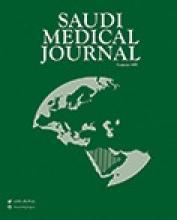To the Editor
I read with interest the recent case report by Tamer et al.1 Entamoeba histolytica (E. histolytica) brain abscess is rare in children, particularly if it is not associated with preceding gastrointestinal amoebiasis or amoebic liver abscess, like the case in question. It is noteworthy that immunocompromised individuals are generally more susceptible to different types of parasitic CNS infections, including E. histolytica.2 Anecdotal studies have shown that human immunodeficiency virus (HIV) is significantly associated with a high prevalence of E. histolytica infection, and individuals infected with HIV are at increased risk for invasive amoebiasis as they exhibit a relatively high frequency of elevated serum anti-E. histolytica antibody titers compared with controls.3-6 In Turkey, the available data revealed that there was an upward trend in HIV infection incidence in the last decade, and pediatric HIV infection was reported to constitute 1% of the total cases between 2007-2011.7 Considering that E. histolytica infection still represents an important public health problem in Turkey,8,9 documentation of a case of E. histolytica brain abscess in the clinical setting should alert pediatricians to suspect concomitant HIV infection. Hence, CD4 count and viral load estimation ought to be contemplated.
Reply from the Author
We thank Prof. Al-Mendalawi for his insightful comments. It is true that, according to anecdotal studies, HIV is significantly associated with a high prevalence of E. histolytica infection; however, a further in-depth review of relevant literature leads us to the impression that the authorities working in this field have divided into 2 opposite sides. Two exemplary reports come from Iran and Mexico, either favoring or rejecting, respectively, the hypothesis of infection by HIV is a risk factor for amoebiasis.3,10 Despite these conflicting results, we are in close agreement with Prof. Al-Mendalawi’s comments that patients, like the one described in our report, should be assessed for concomitant HIV infection and probably for other primary and secondary immunodeficiencies. Although not mentioned in the publication, our patient was found to be HIV-negative in the routine presurgical testing.
Selim Öncel
Division of Pediatric Infectious Diseases, Department of Pediatrics and Child Health, Faculty of Medicine, Kocaeli University, Kocaeli, Turkey
- Copyright: © Saudi Medical Journal
This is an open-access article distributed under the terms of the Creative Commons Attribution-Noncommercial-Share Alike 3.0 Unported, which permits unrestricted use, distribution, and reproduction in any medium, provided the original work is properly cited.






